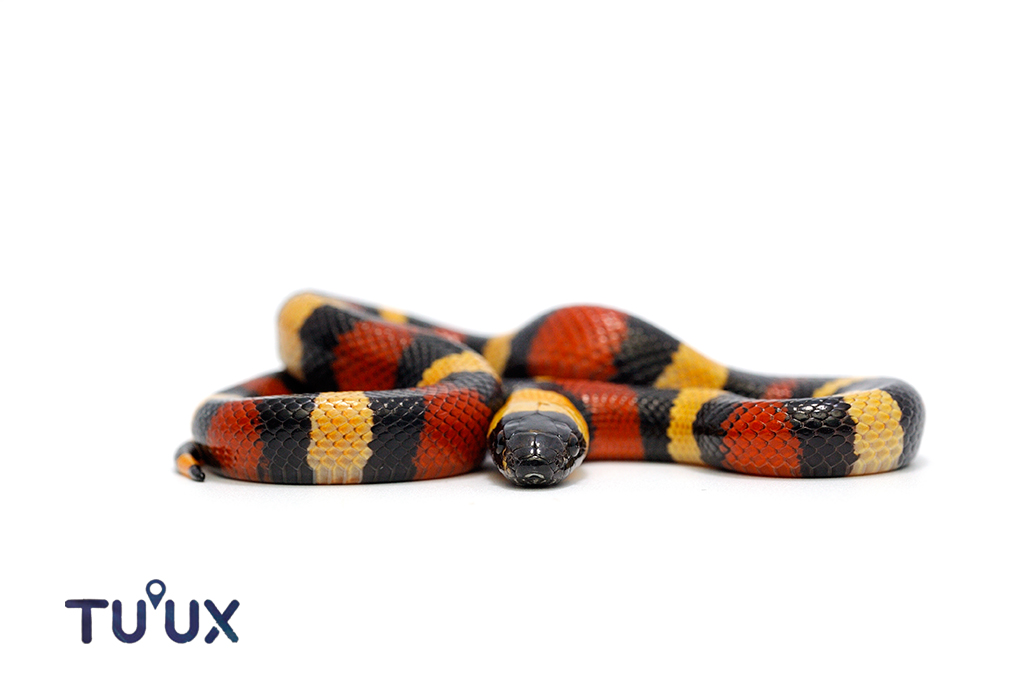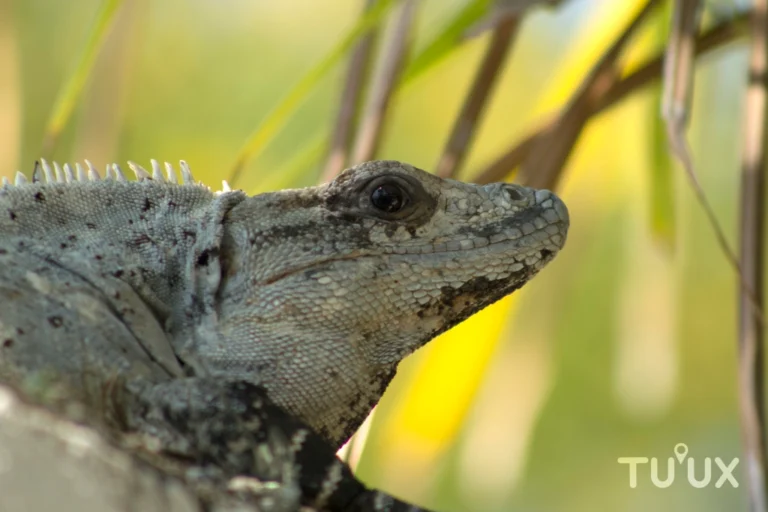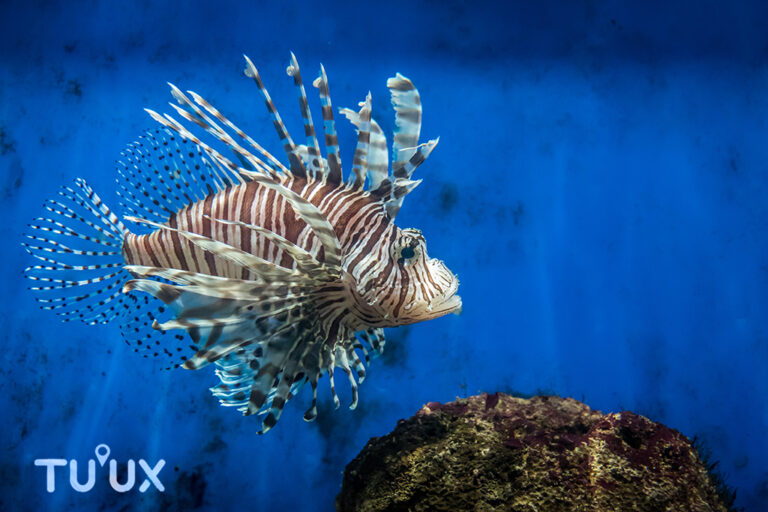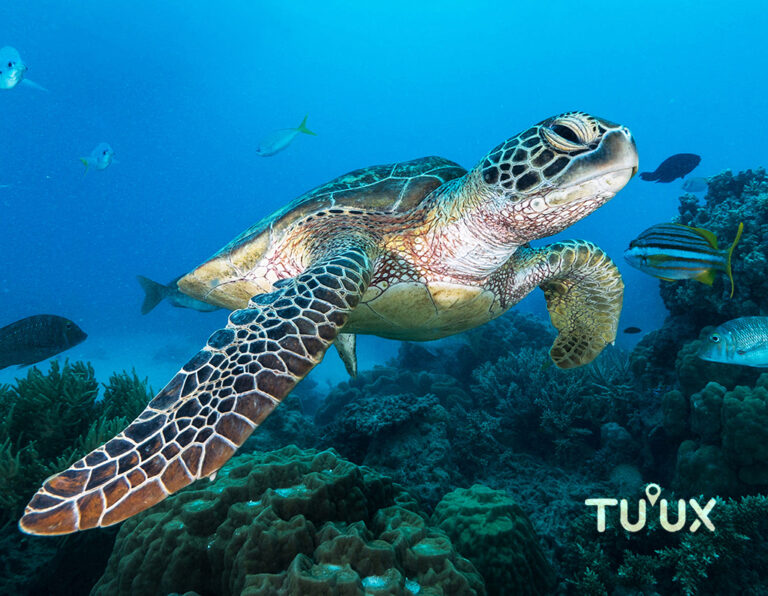CORALILLO
🐍La Coralillo del Caribe Mexicano: Belleza Mortal entre la Selva y el Mar
En las exuberantes tierras del Caribe Mexicano, donde la selva tropical se funde con playas de arena blanca y manglares repletos de vida, habita una de las criaturas más enigmáticas y temidas del reino animal: la serpiente coralillo. Con su distintivo patrón de colores brillantes y su veneno potente, la coralillo ha despertado tanto admiración como respeto entre los habitantes y visitantes de la región.
🌿 Un Habitante Silencioso del Caribe
La especie de coralillo más común en el Caribe Mexicano, incluyendo zonas como Mahahual, Bacalar, Chetumal y la Reserva de la Biósfera Sian Ka’an, pertenece al género Micrurus, específicamente a la especie Micrurus diastema, también conocida como coralillo del sureste o coral centroamericana.
Esta serpiente forma parte de la familia Elapidae, la misma de cobras y mambas, y es reconocida por su veneno neurotóxico. A pesar de su peligrosidad, es una criatura tímida que evita el contacto con humanos y rara vez ataca, a menos que se sienta acorralada.
🔍 Características Físicas
La Micrurus diastema puede alcanzar longitudes de entre 50 y 80 cm, aunque algunos ejemplares más grandes han sido registrados. Su cuerpo es cilíndrico y su cabeza apenas se distingue del cuerpo, lo que puede dificultar su identificación a simple vista.
Su rasgo más distintivo es la secuencia de anillos de colores brillantes: rojo, negro y amarillo o blanco. En esta especie, el anillo rojo no está en contacto con el negro, característica clave que ayuda a diferenciarla de especies no venenosas que imitan su patrón como método de defensa.
⚠️ Precauciones: ¿Cómo Identificar a una Coralillo Verdadera?
En México, una forma más confiable de recordar el patrón peligroso es mediante la regla mnemotécnica RANA:
- Rojo
- Amarillo
- Negro
- Amarillo
Si los anillos de estos colores aparecen en ese orden o muy similar (es decir, con el rojo tocando el amarillo), es muy probable que se trate de una coralillo verdadera. En cambio, si los colores están en un orden diferente o el rojo toca el negro, podría tratarse de una especie no venenosa.
⚠️ Importante: Aunque esta regla ayuda, no es infalible. En México y Centroamérica existen muchas variaciones de patrones, por lo que lo más seguro es no tocar ni manipular ninguna serpiente de colores llamativos.
🐍 Las “Falsas Coralillo”
En el Caribe mexicano también se pueden encontrar serpientes no venenosas del género Lampropeltis o Pliocercus, conocidas como “falsas coralillo”. Estas han evolucionado para imitar el aspecto de la coralillo como estrategia de defensa ante depredadores. Aunque su coloración es similar, carecen de veneno y no representan un peligro para el ser humano.
🧬 Importancia Ecológica
Como todas las serpientes, la coralillo desempeña un papel fundamental en el equilibrio ecológico. Es un depredador de pequeños reptiles y anfibios, y a su vez, sirve de alimento para aves rapaces y mamíferos carnívoros.
Su presencia en ecosistemas como la selva maya, humedales y áreas cercanas a cuerpos de agua, indica un entorno saludable y con buena biodiversidad. Además, el estudio de su veneno ha despertado interés científico por su potencial en investigaciones médicas y neurológicas.
🏞 ¿Dónde se Puede Encontrar?
La Micrurus diastema es nativa de la región y puede encontrarse en:
- Selvas tropicales de Quintana Roo (Mahahual, Bacalar, Felipe Carrillo Puerto)
- Áreas rurales con vegetación densa
- Bordes de caminos selváticos y cenotes
Aunque rara vez se deja ver durante el día, al ser principalmente nocturna, puede aparecer tras lluvias o en horas crepusculares.
✅ Qué Hacer si Ves una Coralillo
- No la toques ni intentes atraparla.
- Mantén la calma y retrocede lentamente.
- Evita mover piedras, troncos o vegetación baja sin revisar primero.
- Educa a niños y visitantes sobre su existencia y la importancia de respetar a la fauna local.
En caso de una mordedura (que es extremadamente rara), acudir de inmediato al hospital más cercano es crucial. El tratamiento adecuado requiere atención médica especializada y la aplicación de antiveneno.
🌎 Convivencia Responsable con la Vida Silvestre
La serpiente coralillo es solo una de las muchas joyas ocultas que alberga el Caribe Mexicano. Lejos de ser una amenaza, su presencia nos recuerda la delicadeza y riqueza de los ecosistemas que nos rodean. Protegerla es también proteger el equilibrio natural del que todos dependemos.
Explora, admira, pero siempre respeta. La selva tiene reglas, y la coralillo es una de sus guardianas más silenciosas.
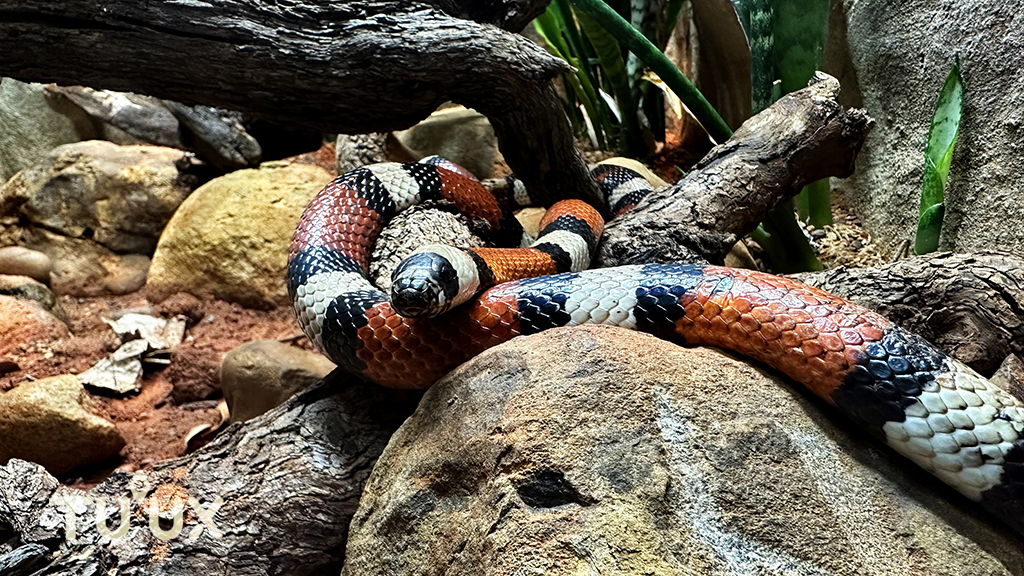
The Coral Snake of the Mexican Caribbean: Deadly Beauty Between the Jungle and the Sea
In the lush lands of the Mexican Caribbean—where tropical jungle merges with white-sand beaches and mangroves teeming with life—lives one of the most enigmatic and feared creatures in the animal kingdom: the coral snake. With its distinctive pattern of bright colors and potent venom, the coral snake has inspired both admiration and respect among locals and visitors to the region.
🌿 A Silent Resident of the Caribbean
The most common species of coral snake in the Mexican Caribbean—including areas such as Mahahual, Bacalar, Chetumal, and the Sian Ka’an Biosphere Reserve—belongs to the genus Micrurus, specifically the species Micrurus diastema, also known as the Southeastern coral snake or Central American coral snake.
This species is part of the Elapidae family, which includes cobras and mambas, and is known for its neurotoxic venom. Despite its danger, it is a shy creature that avoids contact with humans and rarely attacks unless it feels cornered.
🔍 Physical Characteristics
The Micrurus diastema can grow to a length of 50 to 80 cm, although larger specimens have been recorded. Its body is cylindrical, and its head is barely distinguishable from the rest of its body, which can make it difficult to identify at a glance.
Its most distinctive feature is the sequence of brightly colored rings: red, black, and yellow or white. In this species, the red ring does not touch the black, which is a key detail that helps differentiate it from non-venomous species that mimic its pattern as a defense mechanism.
⚠️ Safety Tips: How to Identify a True Coral Snake
In Mexico, a helpful way to remember the dangerous color pattern is through the RANA mnemonic rule:
- Red
- Yellow
- Black
- Yellow
If the rings appear in this order or something very similar (i.e., with the red touching the yellow), it is very likely to be a true coral snake. In contrast, if the colors are in a different order or the red touches the black, it may be a non-venomous mimic species.
⚠️ Important: While this rule is helpful, it is not foolproof. In Mexico and Central America, there are many pattern variations, so the safest approach is to never touch or handle any brightly colored snake.
🐍 The “False Coral Snakes”
In the Mexican Caribbean, non-venomous snakes of the Lampropeltis or Pliocercus genera can also be found, commonly known as “false coral snakes.” These snakes have evolved to imitate the appearance of coral snakes as a defense mechanism against predators. Although their coloration is similar, they are not venomous and pose no threat to humans.
🧬 Ecological Importance
Like all snakes, the coral snake plays a crucial role in maintaining ecological balance. It is a predator of small reptiles and amphibians, and in turn, it serves as prey for birds of prey and carnivorous mammals.
Its presence in ecosystems such as the Maya jungle, wetlands, and areas near water bodies indicates a healthy environment with strong biodiversity. Additionally, the study of its venom has attracted scientific interest due to its potential in medical and neurological research.
🏞 Where Can It Be Found?
The Micrurus diastema is native to the region and can be found in:
- Tropical jungles of Quintana Roo (Mahahual, Bacalar, Felipe Carrillo Puerto)
- Rural areas with dense vegetation
- Edges of jungle paths and cenotes
Although rarely seen during the day, it is primarily nocturnal and may appear after rainfall or during twilight hours.
✅ What to Do If You See a Coral Snake
- Do not touch or try to catch it.
- Stay calm and back away slowly.
- Avoid moving stones, logs, or low vegetation without checking first.
- Educate children and visitors about their presence and the importance of respecting local wildlife.
In the rare event of a bite, seek immediate medical attention at the nearest hospital. Proper treatment requires specialized medical care and the application of antivenom.
🌎 Responsible Coexistence with Wildlife
The coral snake is just one of the many hidden treasures of the Mexican Caribbean. Far from being a threat, its presence is a reminder of the richness and fragility of the ecosystems around us. Protecting it also means protecting the natural balance we all depend on.
Explore, admire, but always respect. The jungle has rules, and the coral snake is one of its quietest guardians.

